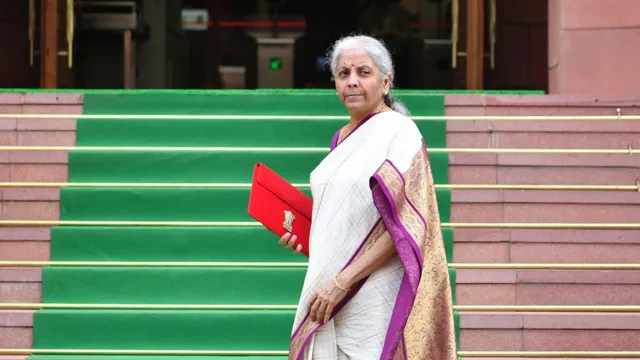- By Priyanka Koul
- Sat, 01 Feb 2025 08:35 PM (IST)
- Source:JND
Union Budget 2025: In a bid to boost consumer spending and revive economic growth, the Indian government has rolled out its largest tax relief in at least a decade. The move, aimed at addressing the growing cost of living and high inflation, will offer significant financial relief to millions of households across the country.
India's economic growth is projected to slow to a four-year low this fiscal year, largely due to weak demand, especially in urban areas where the cost of living continues to climb. In her annual budget speech, Finance Minister Nirmala Sitharaman explained that the new tax structure would enhance disposable income, helping to increase household consumption, savings, and investment.
Key Changes in the Tax System
The new tax changes will allow individuals with an annual income of up to 1.28 million rupees ($14,800) to pay no tax at all, a significant increase from the previous tax-free income cap of 700,000 rupees. However, this tax relief applies only to those filing under the new tax regime. Introduced in 2020, this system offers lower tax rates but limits exemptions, making it different from the older tax structure.
Taxpayers still have the option to choose the older, "legacy" tax system, which allows for exemptions on housing rentals, loans, insurance premiums, and other related expenses.
Updated Tax Slabs: Explained
Under the current tax system, individuals earning up to 1.5 million rupees (about $17,300) are taxed at rates between 5% and 20%. Any income exceeding this threshold is taxed at 30%. However, with the new changes, the highest 30% tax rate will only apply to those earning above 2.4 million rupees, offering significant savings for many taxpayers.
Savings for Taxpayers: How Much Will You Keep?
Taxpayers with an income of up to 1.2 million rupees annually will now be able to claim a standard deduction of 75,000 rupees under the new system. Following the tax cuts, individuals in this income group can expect to save approximately 80,000 rupees in taxes annually.
For those with an income of 2.5 million rupees, the tax bill will drop by over 100,000 rupees from 457,000 to 343,000 rupees, resulting in an effective tax saving of about 5%. This translates to a monthly saving of around 9,500 rupees, offering significant relief to many taxpayers, according to Adhil Shetty, CEO of BankBazar.com.
Also Read: Budget 2025: What Is Jal Jeevan Mission, Extended Until 2028 With Rs 67,000 Crore Allocation?
The Indian government estimates that these tax cuts will lead to a loss of about 1 trillion rupees in revenue each year. In total, around 10 million additional taxpayers will no longer be required to pay taxes due to the increased income thresholds.
The primary aim behind these tax cuts is to encourage higher consumer spending, savings, and investments, said Finance Secretary Tuhin Kanta Pandey. The government also hopes the revised tax slabs will incentivise more individuals to switch to the new tax regime.
Government estimates show a significant rise in participation under the new tax structure, with nearly 73 million people (or 72% of taxpayers) filing taxes under the new regime in 2024-25, compared to 58 million in 2020-21.

